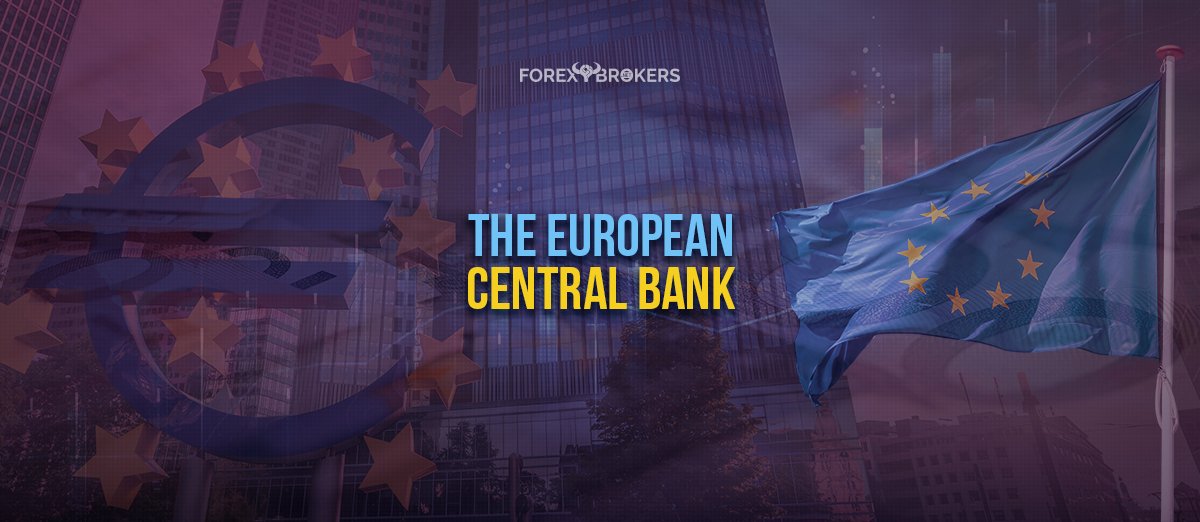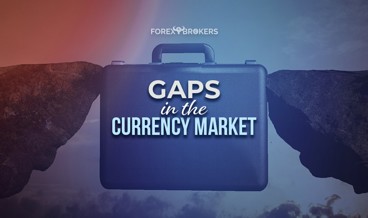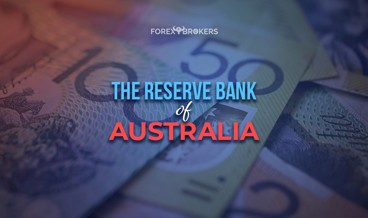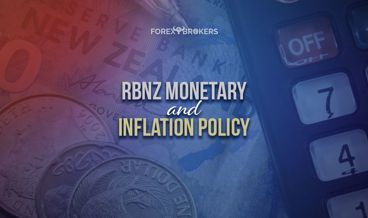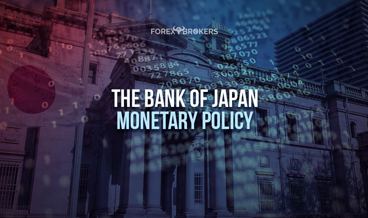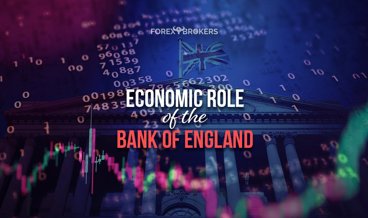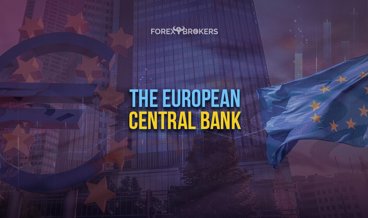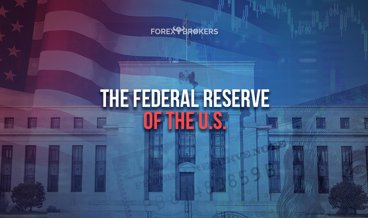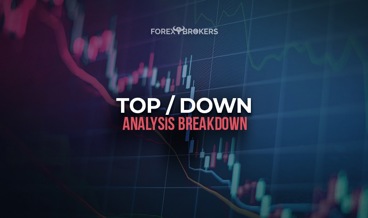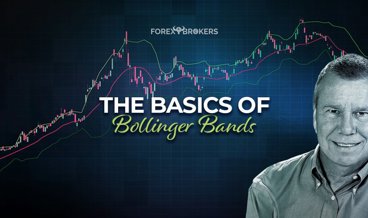The European Central Bank (ECB), the central bank for the Eurozone, is one of the most influential central banks in the world. It faces challenges not seen in any other part of the world, as what it does is unprecedented.
The European Union (EU) was born out of the desire to bring peace to a continent that had been shattered by war for hundreds and hundreds of years. As the world became more polarized (United States, China, Russia), Europeans realized that being united would offer a better chance of putting Europe at the heart of international economic growth.
Home to over half a billion people, the EU market is the one that all countries want to sell their products and services to. Negotiating conditions on behalf of half a billion people gave leverage to Europeans, and the European spirit quickly spread.
Some EU countries (but not all) decided to form a monetary union – that is, to share the same currency. This was a brave task, considering nationalistic interests. However, the European project moved further, and the euro was introduced in 1999 as the common currency for the so-called Eurozone. As of 2019, 19 European countries had adopted the euro, and the ECB is the institution responsible for setting the monetary policy for the Eurozone.
At the heart of the Eurosystem and the Single Supervisory Mechanism for banking supervision, the ECB serves the people of Europe by maintaining price stability. Its mission is far more complicated than for other central banks because of the diversity of the various economies that are part of the Eurozone. For instance, southern countries may run an economic deficit while northern states have a surplus, but only one monetary policy covers all the countries.

The Coming of a European Monetary Union
The European Union is nothing but a regional trade agreement. Basically, a group of countries agreed to reduce and eliminate barriers to trade. Moreover, they freely move factors of production among member countries.
An economic union integrates all aspects of a common market, and on top of that, it requires common economic institutions. For everything to work, common economic policies are needed.
And so the ECB was born, as the pillar of the European Monetary Union. Several European countries adopted the euro on January 1st, 1999, among them Germany, Italy, Spain, and Ireland. Quite literally, these countries surrendered control of their monetary policy to the ECB. Most of the Western European countries adopted the new common currency, the euro, in the hope that it would increase market competition while spurring efficient allocation of resources.
Once the euro was in place, the ECB became the central bank in charge of setting the monetary policy for all the monetary union participants. However, the national central banks did not disappear. To this day, the Bundesbank in Germany and the Bank of France still exist, just as all other national banks of the member countries of the monetary union do.
But they have a new role. They act as the eyes and ears of the ECB in the region, conducting research and surveys and passing along the information to the central bank in Frankfurt, Germany. Next, when the monetary policy is implemented via the transmission mechanism, the national banks make sure a smooth implementation occurs with little or no local hiccups.
ECB – History, Mandate, Structure
In 1990, the first stage of the European and Monetary Union (EMU) took place. It involved the free use of the euro’s predecessor, the European Currency Unit (ECU), and freedom of capital transactions.
The integration went further when the second stage began at the start of 1994. The European Monetary Institute (EMI) was established, and a further strengthening of economic convergence emerged.
The last stage, in January 1999, is well known because it involved the introduction of the euro. Besides this, the Stability and Growth Pact, as well as the intra-EU exchange rate mechanism, went into effect.
Inflation is the top priority for the ECB. More precisely, the main objective is to maintain price stability by keeping inflation rates below, but close to, two percent. The ECB’s Governing Council uses the Harmonized Index of Consumer Prices (HICP) as the measure of inflation. For traders, the Core HICP is of particular importance as it discounts the effects of energy prices on overall inflation.
Most recently, under the leadership of the new president, Christine Lagarde, the ECB began a strategy review process expected to take about a year to complete. On top of the agenda is the way the ECB calculates inflation, with the aim being to change the composition of the basket of goods and services part of it.
ECB Structure and Organization
The ECB has a president and vice-president, and the decision-making body, the Governing Council, consists of the governors of the national central banks and six members of the ECB Executive Board.
The voting rights in the Governing Council follow a rotation system that allocates the rights to the members of the Governing Council. It was implemented by the time the number of governors exceeded eighteen, and its aim is to accommodate new entrants into the Eurozone by enhancing the Governing Council's ability to act.
Based on the size of the national economies, the governors have different voting powers. As such, the governors of Germany, Spain, Italy, the Netherlands, and France share four voting rights, while the other governors share eleven voting rights. In a way, the system is similar to the one used by the Federal Open Market Committee (FOMC) in the United States, but with one big difference – in the United States, the voting rights rotate on a yearly basis, while in the Eurozone it rotates on a monthly basis.
Based in Frankfurt, Germany, the ECB employs a few thousand people from all Eurozone countries who work with one single purpose in mind – to help the Governing Council set the right monetary policy for the entire Eurozone.
Challenges in the Last Years
The 2008 financial crisis tested central banks to the extreme. The crisis started in the United States, where the housing market collapsed, forcing the US Federal Reserve to take unprecedented measures. It lowered the federal funds rate to almost zero. More importantly, it made the most critical cut between two monetary policy meetings, letting the markets understand the gravity of the situation and the fact that the Fed stands ready to intervene.
The housing crisis quickly spread all over the world. Having low growth and poor unemployment already, not to mention a lack of experience in handling a crisis, the ECB reacted poorly. Amid the financial crisis, for example, the ECB's president at that time, Jean-Claude Trichet, announced that the ECB was raising the interest rates. It'll go down as one of the biggest mistakes in modern monetary policy, as the financial crisis spread and the ECB was forced to quickly reverse course.
For a new institution, it put at risk the already weak European economies, while the rest of the world was closely following in the Fed’s footsteps, slashing rates in a frenzy. As if this wasn’t enough, the ECB was facing an internal problem that almost crashed the central bank and the euro. Speaking of that, as the pillar of the European Union, the collapse of the euro means the end game for the entire union.
Greece, a member of the Eurozone, was caught cheating on its economic reports. It forged the declarations sent to Brussels, and by the time everything became public, the ECB and the euro were in crisis mode.
As always, international financial markets took things to the extreme – yields on Greek bonds, but also Italian, Spanish, Portuguese, and other European countries surged, making it difficult for the governments to borrow money from the international bond market.
Whatever It Takes
After Mario Draghi replaced Trichet at the helm of the ECB, at the first ECB meeting, the central bank announced a cut of the main refinancing rate. It was the first of a long series as, during his eight-year term, Mario Draghi and the ECB cut the rates without ever delivering a rate hike.
During the Greek crisis, other countries like Cyprus fell under the pressure of international financial markets. The ECB ordered a haircut on commercial banks' deposits – an unprecedented move destined to bring stability to the country's poor finances. Because the announcement came over the weekend, the euro opened with a huge gap lower, known to this day as the "Cyprus gap."
This was only the beginning of unprecedented moves by the ECB. In time, under Draghi's leadership, the ECB excelled at coming up with new ways to calm the markets and bring inflation to its target. Even though meeting the inflation target proved challenging, the unemployment rate continued to fall after the 2008 financial crisis, and the ECB took pride in more and more Europeans having a permanent job.
Outright Monetary Transactions (OMT), Long-Term Refinancing Operations (LTRO), Targeted Long-Term Refinancing Operations (TLTRO), negative rates, and Quantitative Easing (QE) are only some of the unconventional monetary policies the ECB undertook under Mario Draghi’s leadership.
It all culminated with Draghi reinstating markets' faith and trust in the ECB. His famous London speech will go down in history as the turning point of the European crisis – the ECB was ready to do "whatever it takes to preserve the euro." And that was the end of the market's turmoil.
What Traders Must Know About the ECB
The European Union gave birth to one of the largest single markets in the world. What's truly unique about Europe and its citizens is that a high degree of civilization makes this single market of educated people one-of-a-kind in the world.
Every big company around the world wants to sell its goods and services in the single market, and we aren’t just talking about consumer goods – but about services and high-end products that usually have a higher markup and are difficult to sell in other parts of the world.
The European Union is more than a free trade area. It represents a step forward, an advanced common market with common institutions. Because of the euro, adopted by many EU countries, this economic union, centered around its common institutions, further advanced its integration by becoming a monetary union as well.
The ECB oversees the monetary aspects of the Eurozone and is in charge of setting the right monetary policy for the area. Because of the monetary union, the euro became a pillar of European integration and the very first reason why the ECB exists in the first place.
During the press conference that follows every ECB interest rate decision, the euro fluctuates aggressively. Based on the wording used or the details provided by the ECB president, the trading algorithms are instructed to buy or sell the euro against other currencies.
Communication is key. Central banks around the world, the ECB included, take great care in how the bank communicates its decisions so that the financial system is not disrupted.
The ECB Interest Rate Decisions
Every six weeks during the year, the Governing Council meets to decide the monetary policy for the next six weeks. The announcement always comes on a Thursday, right before the North American traders reach their desks. Forty-five minutes later, the press conference offers more details about the measures implemented by the ECB and how they will impact the Eurozone’s economies.
Few traders may know that the Governing Council of the ECB sets not one, but multiple interest rates after each meeting. More precisely, it sets the interest rate on the main refinancing operations, on the deposit facility, and on the marginal lending facility.
The different interest rates have a different role and purpose, and a change in the interest rate level affects the euro differently. The purpose's main scope is to provide liquidity to the banking system.
Banks use the rate on the deposit facility to make overnight deposits in the Eurosystem. Finally, banks can access overnight credit using the marginal lending facility.
Anyone involved in financial markets is aware of the fact that the ECB moved the interest rate into negative territory. However, few traders know that only the deposit facility is negative. It has stood at - 0.5% since September 2019, a further cut from -0.4% from three years earlier. The ECB wanted to reassure investors that it is serious in its easing stance and doesn't see any reason yet to move the deposit facility back into positive territory. At the time of writing this article, the main refinancing operations and the marginal lending facility interest rates were 0 and 0.25%, respectively.
Why Interest Rates Matter for a Currency
The standard interpretation is that a rise in interest rates is bullish for the currency, while a cut has a dovish or bearish effect. When Draghi took the helm of the ECB in November 2011, he started an easing cycle that cut the deposit facility from positive to negative 0.5%. The EURUSD pair traded at 1.36 at the time, and is now at 1.08, reflecting the inversed correlation that exists between interest rate levels and the currency’s strength.
When trading currencies, it is all about the interest rate level. The focus always remains with the deposit facility, but the other two have roles in the healthy functioning of the monetary system, too.
It does NOT refer to the deposits built by the public at commercial banks. Instead, it refers to the interest rate paid to banks for depositing money with the central bank overnight.
Why is this important for trades? Firstly, the higher the interest rate paid, the more interested the commercial banks are in building deposits. This way, the ECB “collects” extra liquidity from the market, effectively tightening the monetary policy or contracting the money in circulation. As a side effect, the currency rises in value. Secondly, the lower the interest rate, the more reluctant banks are to make deposits at the ECB. Instead, they’ll look to “invest” the money in the economy in a search for higher yields. Thus, the ECB runs a looser monetary policy the lower it sets the interest rate level.
Areas Affected by a Change in the ECB Official Interest Rates
Let’s consider the current -0.5% interest rate on the deposit facility. Commercial banks may or may not decide to apply it to their customers’ deposits in order to cover for the cost charged by the ECB.
Because the ECB charges but does not pay interest, commercial banks end up paying for the "privilege" of parking their extra liquidity at the ECB. They often choose to do this because paying the interest rate charged by the ECB is often safer than the risk associated with investing the money in the real economy.
The official interest rate changes directly affect bank and money market interest rates, expectations of future interest rate changes, asset prices, savings and investment decisions, supply of credit and bank loans, and changes in aggregate demand and prices. Therefore, the change in interest rates affects all areas in the economy because the banking system sits at the core of a well-functioning economy.
When the ECB changes the interest rate or rates, the effects take time to be seen in the economy. Because the transmission mechanism of the monetary policy has various time lags, the impact is not seen immediately. However, the currency market is the one that reacts immediately to any ECB decisions as the market expectations are priced in right away.
The Transmission Mechanism
A change in the official interest rates leads to a change in expectations and money market interest rates. Moving forward, money credit, asset prices, and bank rates change too, leading to changes in the exchange rate.
The ECB and other independent central banks around the world won’t ever say they target a certain exchange rate. Often this question comes up during the press conference, but the president always has the same answer – the ECB won’t comment on the exchange rate.
In reality, the exchange rate matters for monetary policy decision-makers. In fact, the Governing Council is always aware of the euro quotations across the dashboard, especially against important commercial partners – e.g., the United Kingdom, Switzerland, the United States, China.
The exchange rate affects supply and demand in goods and labor markets, and this affects the wages and price-setting (i.e., inflation). It also affects import prices, with a direct influence on the inflation level as well.
It becomes obvious that all the effects triggered by the interest rate changes take time. On top of that, they trigger a chain reaction in other areas like commodity prices, fiscal policy, global economy, bank capital, and risk premia.
The ECB Press Conference
For traders, the ECB press conference is the central piece of monetary policy. This is the time when the euro fluctuates widely, and speculating opportunities appear.
Sometimes all the information is priced in. When sensitive decisions are expected by the market participants, the ECB wants to make sure it doesn't leave room for interpretation. As such, together with the interest rates announcement, the ECB issues brief snippets from the Governing Council statement to be read forty-five minutes later.
For example, if the ECB is expected to cut the deposit facility rate and to announce an extension of the quantitative easing program, it won't wait until the press conference to announce the extension so as not to create market turbulence. Instead, it will announce the extension at the time of the interest rate announcement, and the details follow during the press conference.
The best way to sense the impact of the press conference on the exchange rate is to monitor the euro pairs as the ECB president reads the Governing Council's statement. Many times, the slightest change of tone or hint about future actions triggers ample moves on the euro pairs.
However, the market is not always right. Remember that the trading algorithms are responsible for most of the trading volume, and the initial reaction is always caused by algorithms. If the ECB senses that the market misinterpreted its message, it'll follow up in the next days with more details and a new message designed to push the market in the right direction.
ECB’s Non-Standard Measures
The ECB is one of the world’s major central banks forced to engage in non-standard measures. That is, it took unprecedented steps to fill its mandate of price stability.
As mentioned earlier in this article, for the ECB, price stability means the HICP inflation should be close to but below the 2% target. When inflation deviates from the price stability threshold, the ECB reacts by hiking the rates (on higher inflation) or cutting them (on lower inflation).
The problem with the two directions is that the downside is limited. If inflation overshoots the ECB target, the central bank may literally hike the rates faster to contain the upside in inflation. But when inflation undershoots the target, the zero level provides a boundary not crossed until recently.
Every time inflation fell below 1% the central banks intervened with more cuts and additional measures. These measures, called unconventional or non-standard measures, are of various types and are tailored to each economic region.
For instance, the ECB took different non-standard measures than the US Fed and the Bank of Japan. This is normal, though, because each economy has its own local characteristics, and not every tool works everywhere.
The deposit facility rate set by the ECB represents a floor for a corridor between the deposit facility and the marginal lending facility. Therefore, changes in the deposit facility rate affect the marginal lending facility, too, as the ceiling of this corridor.
Fixed-Rate Full Allotment
In normal times (i.e., before the 2008 financial crisis), the interbank market acted as the place where banks would borrow from each other according to their liquidity needs. However, the interbank market suddenly dried up before the crisis, and no money was available.
The ECB stepped in and responded initially by providing unlimited credit to banks in need. It charged a fixed rate for this, called a fixed-rate full allotment.
As the crisis deepened, the ECB extended the maturity of these loans, giving a helping hand to banks in desperate need of funds. Furthermore, commercial banks needed to come up with collateral to access the loans given under such preferential conditions. In time, the ECB extended the range of the products accepted as collateral, sparking great controversy at that time.
It was, however, the first time in the ECB's history that a non-standard measure (i.e., new measure) was introduced as something new when compared with the monetary policy tools used up to that point.
Sovereign Debt Crisis
The Greek sovereign debt crisis struck the Eurozone, creating chaos in international financial markets. The ECB was under renewed pressure to act to establish trust in the institution and to provide liquidity and assistance to commercial banks.
One of the first announced measures during the sovereign debt crisis was the introduction of very long-term refinancing operations (also called VLTRO) with the aim of supporting bank lending and money market activity. Also, the ECB purchased debt securities via a program dubbed the Securities Market Program (SMP). It also introduced the concept of Outright Monetary Transactions (OMT) designed to calm the sovereign bond markets.
Fighting Deflation
As we all know, the financial crisis is behind us, as is the sovereign crisis. The ECB and the euro survived, despite many calling for the breakup of the Eurozone.
But inflation didn’t come close to the price stability threshold. Instead, it kept declining towards the zero level, and the ECB governors started to fear deflation – negative inflation.
Japan spent decades fighting deflation, without much success, so the ECB knew that the task ahead was not an easy one. To start with, it lowered the deposit facility interest rate into negative territory. The markets viewed the move as extremely dovish because the entire corridor was affected as well – the marginal lending facility too.
The idea was to suppress the interest rates on the entire lending spectrum so as to loosen the financial conditions in the entire Eurozone. In other words, unprecedented times called for unprecedented measures – and the ECB was ready to provide them.
It continued with a quantitative easing program, albeit with a different name than in the United States. Under the Asset Purchase Programs (APP), the ECB started to buy third-covered bonds, asset-backed securities, and public and corporate debt. The idea of such tools was to put pressure not on the interest rates per se, but on the term structure of such rates.
Forward Guidance
One of the most efficient non-standard measures used by the ECB and other central banks refers to information about the future monetary policy. More precisely, how this information is presented to markets, as the markets react immediately.
The forward guidance clearly states the horizon of the measures in place. For instance, when the ECB announced the negative interest rate on the deposit facility, it also provided a time horizon for how long it would keep it there. The same was done for the APP and other non-standard measures.
Traders and other market participants focus on the changes in language so that they aren’t taken by surprise when the programs end. Forward guidance is a tool that allows the ECB to remain credible, and changes in the forward guidance are not welcomed by the market.
However, sometimes the ECB needs to act fast and without hesitation. To test the potential market reaction to a specific change in monetary policy that is not covered by the forward guidance up to that moment, the ECB conducts so-called trial balloons.
Introduced in 2013 under Mario Draghi’s presidency, the forward guidance has remained ever since an effective tool for investors to understand the ECB’s intentions and for the ECB to maintain credibility as well.
- Trial Balloons
When ECB members feel that their message is misunderstood or when the market overreacts to specific events, the ECB uses all the media channels it has to test the market's response to potential new tools. One of the relatively new channels the ECB uses consistently is Twitter.
Twitter's financial community, dubbed FinTwit, is full of traders and policymakers alike. With economists of all sorts, researchers, central bank watchers, FinTwit has something from every corner of the economic spectrum.
This trading academy will have a full article dedicated to Twitter and the Twitter accounts to follow to make the most of the FinTwit community and to better understand concepts like trial balloons.
News agencies also run Twitter accounts. Behind any sudden movements in the euro pairs, there's a reason. If there's a chance of finding that reason, Twitter is the best approach.
Here's an example of a possible trial balloon on a bearish euro market sentiment: "ECB considers ending the APP program sooner than initially planned – Sources." A close look reveals that the message doesn't say anything in particular, but it has a hawkish tone. A strong, bullish market reaction to such a trial balloon would tell the ECB how the market is positioned and what the potential impact of such a decision could be.
Trial balloons are an effective way to improve the forward guidance and to test the market’s expectations. Only recently introduced, they serve the ECB well in testing different approaches for its monetary policy.
Conclusion
People find that talking about money is a sensitive subject for various reasons. Many don't understand the idea of a currency and the financial system. Others, lacking the financial resources needed, blame the central bank for all the bad things that happen in an economy.
The truth, as always, is somewhere in the middle. The purpose of an independent central bank like the ECB is to fulfill its mandate of price stability while respecting the rules it must follow.
Sometimes this is more difficult to do than many imagine. That's especially true when considering the lag between the moment the ECB announces new measures until the effect of those measures is seen in the real economy.
The ECB is a central bank like no other. It applies a universal monetary policy to different local economies, much in the way the Fed does, but having to deal with different nations. In Europe, besides being Europeans, the Eurozone citizens are first Germans, Austrians, Italians, Spaniards, and so on. Some economies perform better than others, such as when we compare the Spanish and German economies. Yet, the ECB monetary policy must suit both the Spanish and the German interests. Germans, for instance, are savers, while Spaniards – not so much.
To sum up, the European central bank has a difficult role, but it did a great job containing the 2008 financial crisis and the subsequent sovereign debt crisis. It managed to build trust in the financial community and the public, and that is all that matters when it comes to the banking system in any part of the world.
